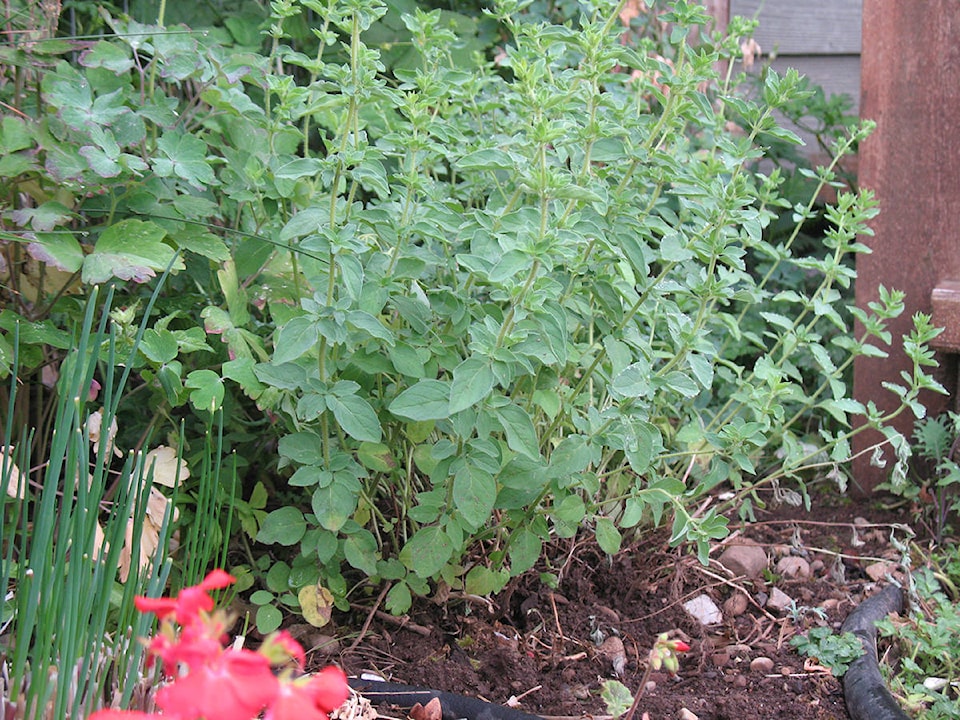By Mary Lowther
David has suggested that a childhood diet of Scotch broth, kale and haggis should have prepared me for the bitter “herbal” teas and brewer’s yeast concoctions I endured for my health as a young adult, growing up in the Age of Aquarius. This is what we Hielanders have come to expect from the Sassenachs; after growing up on a diet of bangers and mash, toad in the hole and bread pudding the poor heathens are simply unprepared for wholesome food. I have long suspected that they conquered India while searching for a cure for constipation.
Besides, those bitter teas David refers to are now dim memories because I decided in the wisdom of my advancing years (I refuse to discuss how many) not to eat anything that doesn’t taste good. I also discovered that herbs are not all bitter. I suspect that the medicinal concoctions I was subjected to were actually a conspiracy designed to sell more coffee.
Used properly, herbs enhance the flavour while adding terrific health benefits to our diet. We can grow them easily because most herbs are undemanding, and do not fall prey to infestation or disease. Annuals like small leafed basil, cilantro and dill grow well in my vegetable patch where I can give them more care, but perennials like lavender, oregano, rosemary and chives thrive in my less fertilized flower garden.
The term “herb” refers to an herbaceous plant as opposed to a tree or shrub. In Latin, herbaceous means “grassy”. Just a few plants provide enough for an entire family. I start annuals from seed in flats in early spring and transplant them outside in May, tucking them in between vegetables like cabbages since their aroma may deter pests. I don’t bother putting annuals into the garden rotation plan because they don’t acquire disease organisms in the soil like vegetables, so I just plant them where there are spaces.
Perennial herbs can be propagated from seed or cuttings and grown in a permanent bed. When they get too big for their britches I divide them and pot up the extra to give away. Since the flavour and nutrients concentrate in the growing tips, I cut these tips every few weeks and do a final cutting in mid-August, leaving the last of them to flower.
I save most herbs by air drying and then storing them whole in paper or plastic bags in a cold room over winter, but some herbs like basil retain more flavour when frozen instead. Blend them with a bit of water and freeze the mixture in ice cube trays. Pop a cube into soup or stew during the last fifteen minutes of cooking for the best flavour.
When you’ve removed the leaves and tops from the stalks after drying herbs, save the stalks to strew on garden paths next summer for a fragrant smell when you walk over them. Here’s a recipe for a nice spice blend using herbs we can grow:
Greek Spice Blend:
1 T. garlic powder
1 T. dried basil
1 T. dried oregano
1 ½ tsp. salt
1 ½ tsp. black pepper
1 ½ tsp. dried parsley
1 ½ tsp. dried rosemary
Mix and use on salads or tomato sauce, as a rub for meats or sprinkle on roasting vegetables during the last 15 minutes of cooking. For another fine recipe I recommend Paul Simon’s poultry seasoning: parsley, sage, rosemary and thyme.
Please contact mary_lowther@yahoo.ca with questions and suggestions since I need all the help I can get.
